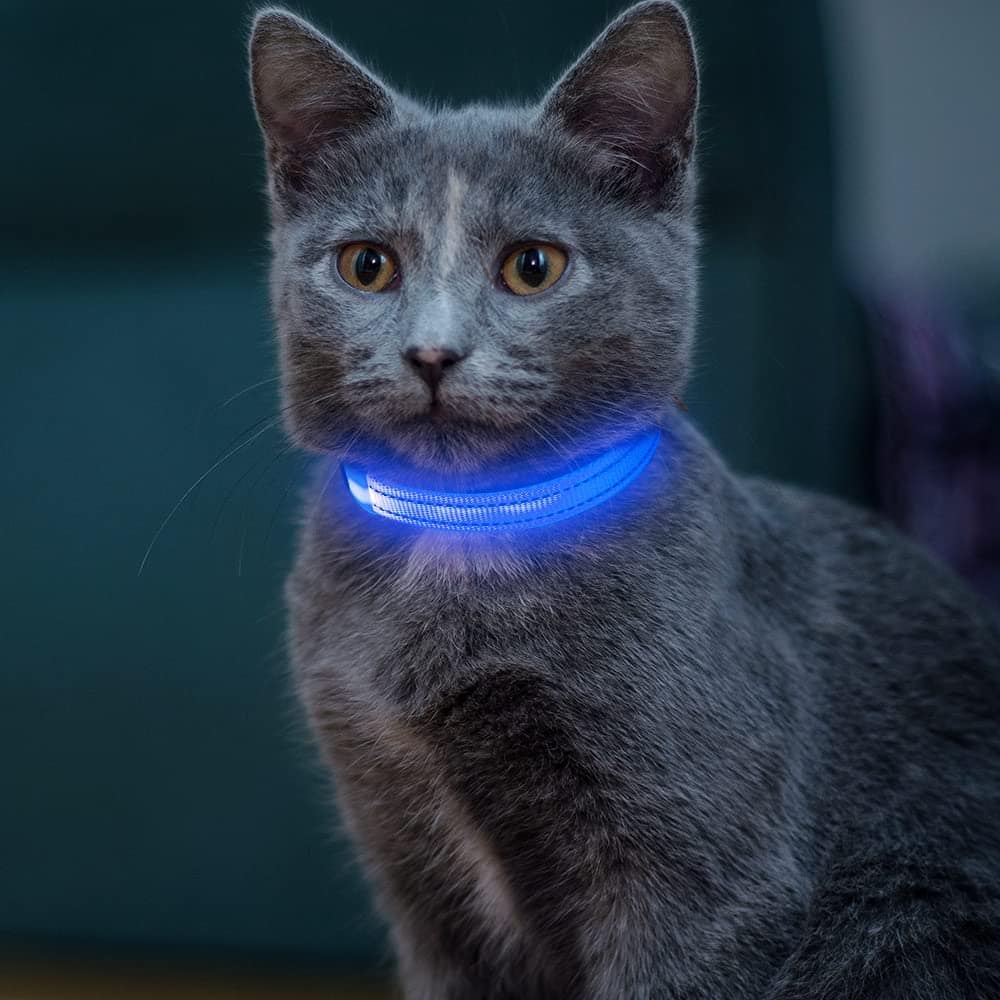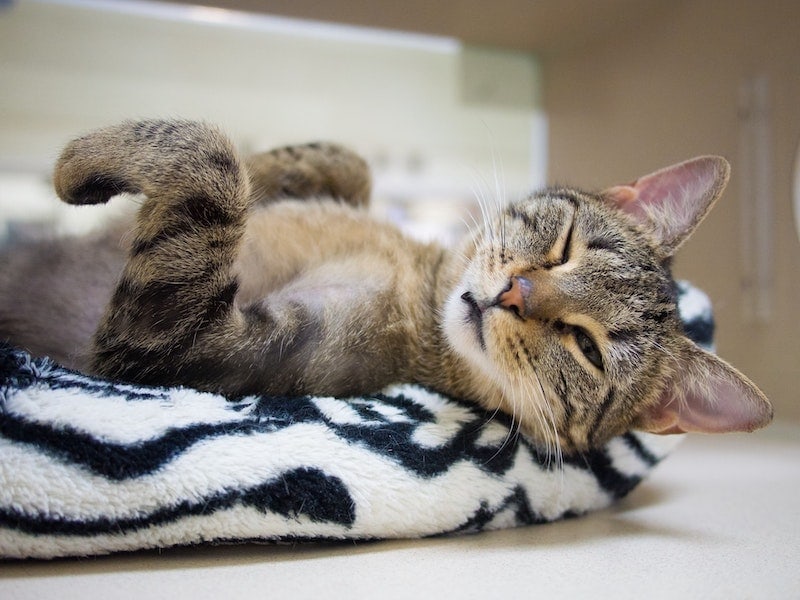Cat Lice vs Fleas: What Does My Cat Have? What Are the Differences
Updated on
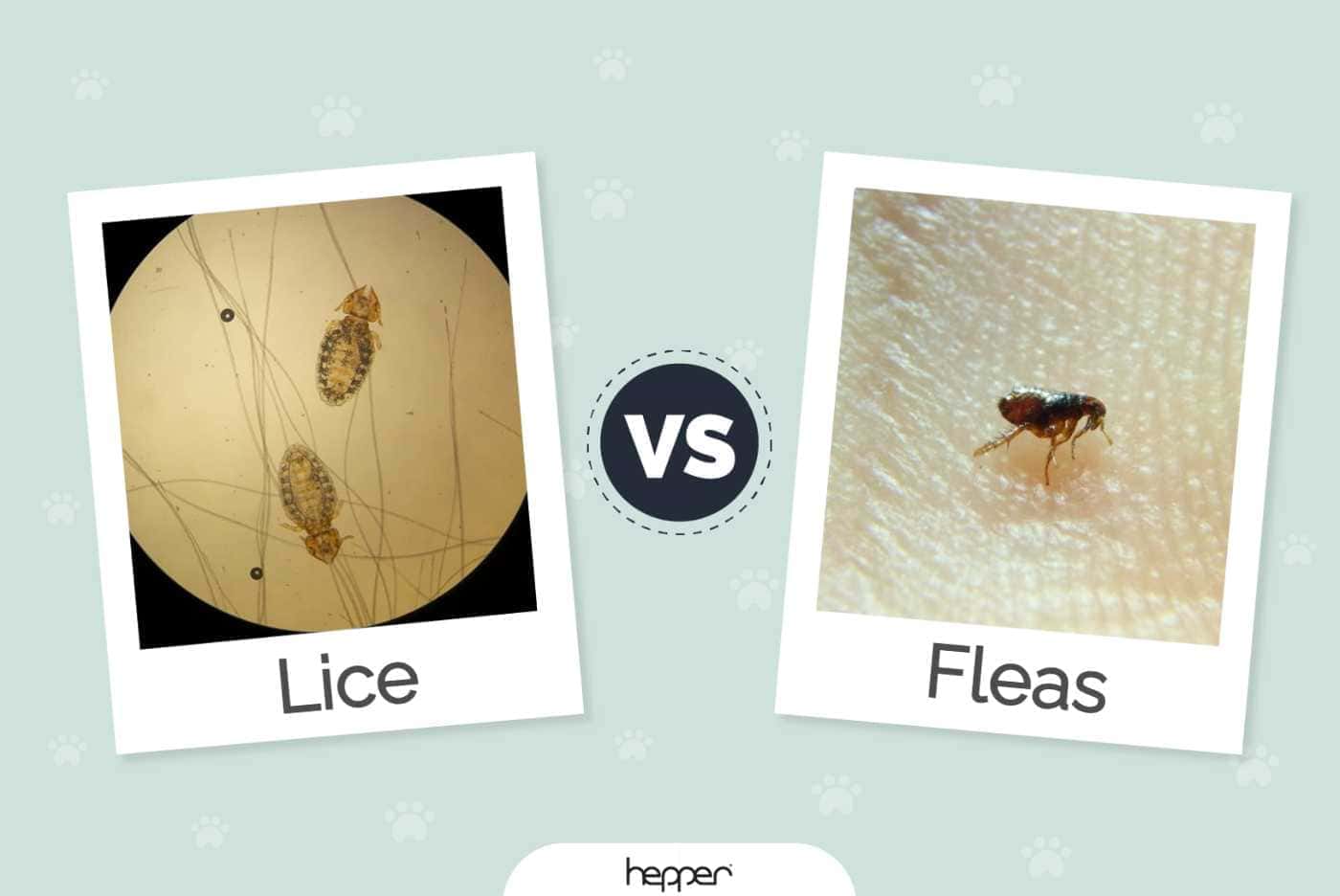
Click to Skip Ahead
Overview of Lice

What Is Cat Lice?
Lice are parasites that live on the skin of animals. These wingless creatures are actually very small insects that feed by chewing the skin of the animal they infest, in this case, the cat. They are not as common as fleas; they are most often observed in situations where sanitary conditions are poor.
In addition, there is only one species of lice that infest cats, Felicola subrostratus.
Lice can be transmitted directly from one cat to another through direct contact or through contact with contaminated objects, such as grooming utensils or bedding. Left unchecked, they can quickly infest the cat’s whole body.
How Do You Know if Your Cat Has Lice?
Lice are easily recognizable thanks to their particular morphology. They are small, wingless insects, flattened dorsoventrally, grayish in color, and measuring little more than a few millimeters in length. Their heads are large and their mouths are adapted for biting and crushing or for stinging. Each species is first identified by the host in which it was found. Thus, the cat louse is distinguished by the triangular shape of the front part of the head; they uses their jaw to grab hold of the hair.
The first signs that your cat may have lice are scratching, biting, and rubbing the infested areas. If lice are plentiful, you may also find hairless areas on your pet’s body. Lice and eggs are also visible to the naked eye.
Signs in infected cats include:
- Excessive itching and scratching
- A dry, scruffy-looking coat
- Hair loss, most commonly around the ears, neck, and rectum
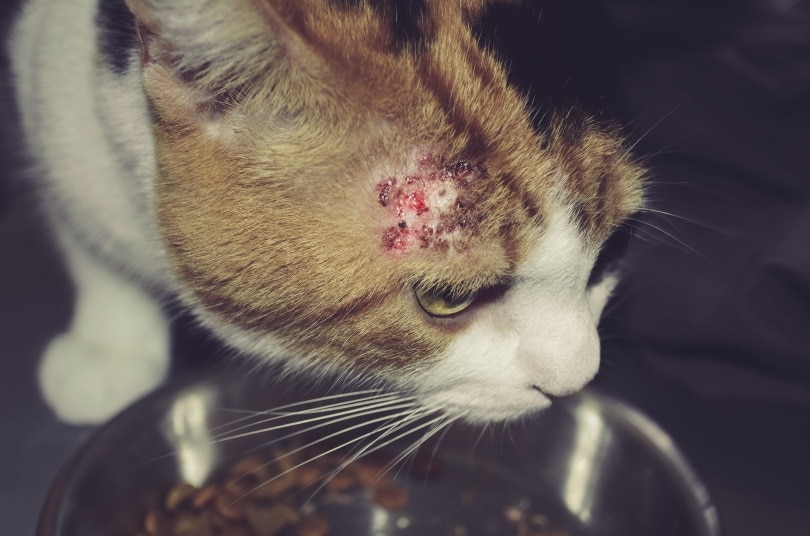
Can Cat Lice Live on Humans?
Fortunately, each species or type of lice is very picky about the type of animal it infects. Indeed, lice are specific to the species they infest. They do not move from one species to another.
So no, humans can’t get lice from cats, and cats can’t get lice from humans.
- Cat lice are tiny parasites that live on the skin.
- They are grayish wingless insects with flattened bodies.
- Lice are visible to the naked eye.
- It is impossible to catch lice from your cat and vice versa.
Overview of Fleas
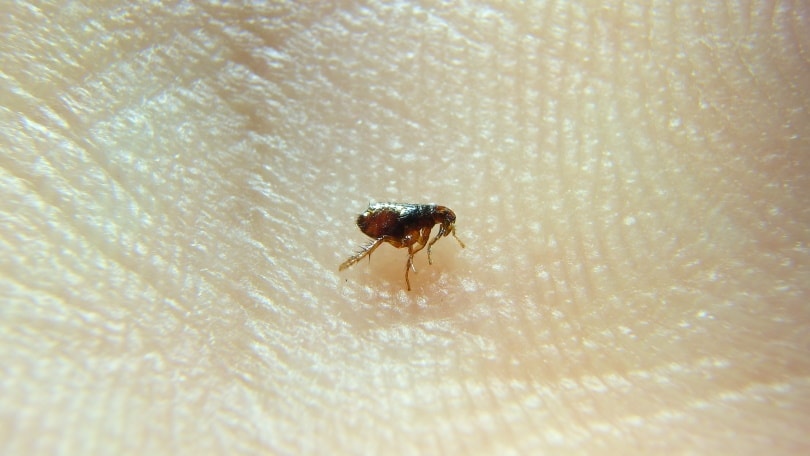
What Are Cat Fleas?
Cat fleas (Ctenocephalides felis) are small, wingless insects that live on your cat’s body, feed on their blood, and lay eggs in their coat. Their eggs can fall all over the house. A single flea can lay up to 2,200 eggs in its lifetime, and its entire life cycle takes only a few weeks.
They are microscopic vampires who, in addition to being a nuisance, can spread disease.
How Do You Know if Your Cat Has Fleas?
It can be quite difficult to spot fleas on cats, and the first sign you might notice is scratching. You can check your cat regularly by combing them gently with a flea comb and shaking the comb on a damp white cloth. If you see black spots (flea droppings) that turn reddish-brown, your cat has fleas. Very often it is difficult to know for sure that your pet has fleas, as these little beasts hide deep in the coat and quickly move away when you pull them aside, making them hard to find.
Can Cat Fleas Live on Humans?
Although they do not live on us, fleas bite humans, especially in the ankles and lower legs. They can also jump on other animals in the house and infest them.
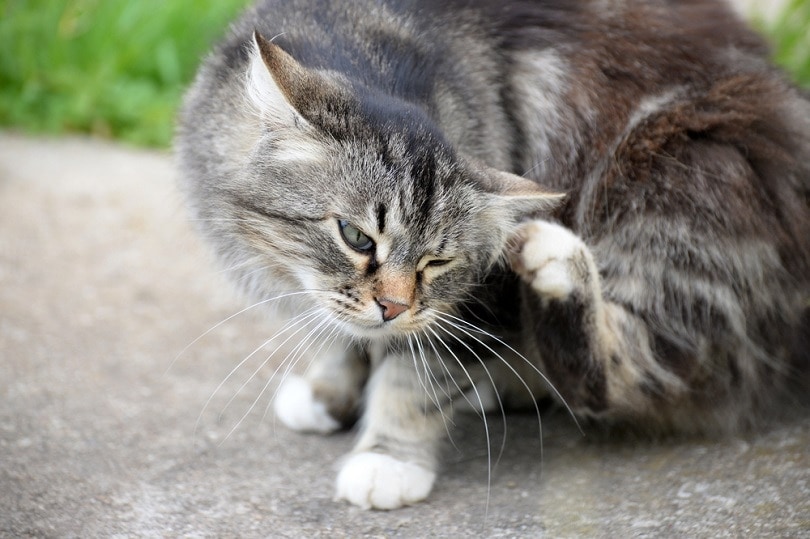
What Are the Dangers Associated With Flea Bites?
Flea bites are painful and irritating to your cat, and they can cause a variety of problems, including:
- Flea Allergy Dermatitis (FAD): FAD is an allergy to flea saliva and, in this case, a few bites are enough to trigger a severe skin reaction and intense itching. If your cat has FAD, their skin may have painful scabs. They can also lose their hair due to excessive grooming, which increases the risk of skin infection.
- Anemia: Anemia refers to lower-than-normal numbers of red blood cells in the blood. There are different factors that can cause anemia in your cat. When a cat has a severe infestation of fleas, the large population of tiny parasites feeding on their blood could result in anemia.
- Tapeworm: Fleas are part of the tapeworm reproductive cycle; they ingest the tapeworm’s eggs and carry larval forms of tapeworm within their tiny bodies. A flea-infested cat will ingest some fleas during grooming. The tapeworm larvae will then continue developing into adult forms in the cat’s digestive system.
- Transmission of Disease: Cat fleas can also transmit diseases, including Bartonella bacteria (which can cause a potentially debilitating disease called Bartonellosis), and Rickettsiae, the bacteria responsible for the flea-borne typhus, a zoonotic infection in humans.
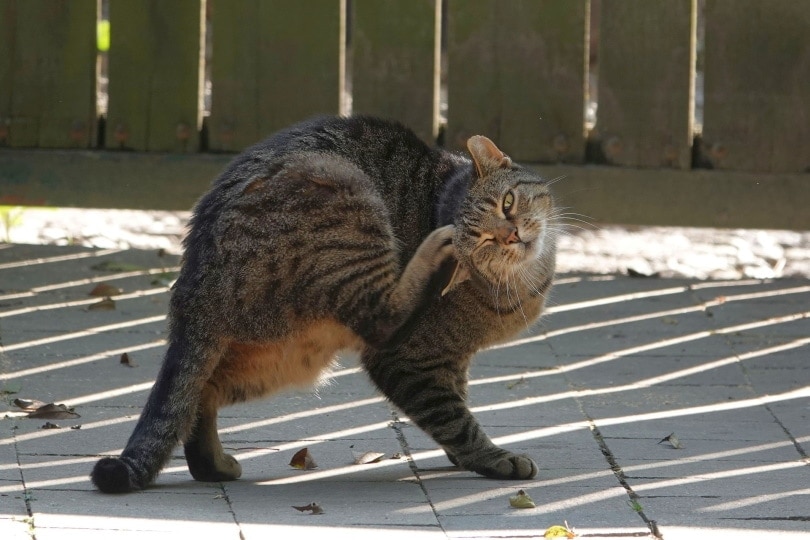
- Cat fleas are tiny wingless insects that live on your cat’s body.
- They lay up to 2,200 in their lifetime.
- They are difficult to find on the animal’s body.
- They can transmit diseases to humans.
What Are the Main Differences Between Lice and Fleas?
| Cat Lice | Cat Fleas |
| Cat lice are wingless insects that are no more than 2 mm in length | Cat fleas are wingless insects and are 1 to 4 mm in length |
| Cat lice are not transmitted to humans | Fleas can bite humans |
| Lice have mini legs with claws to hang on to their host | Fleas have extra-long legs; they do not cling to the cat’s skin or coat |
| Lice are grayish | Fleas are dark red or brown |
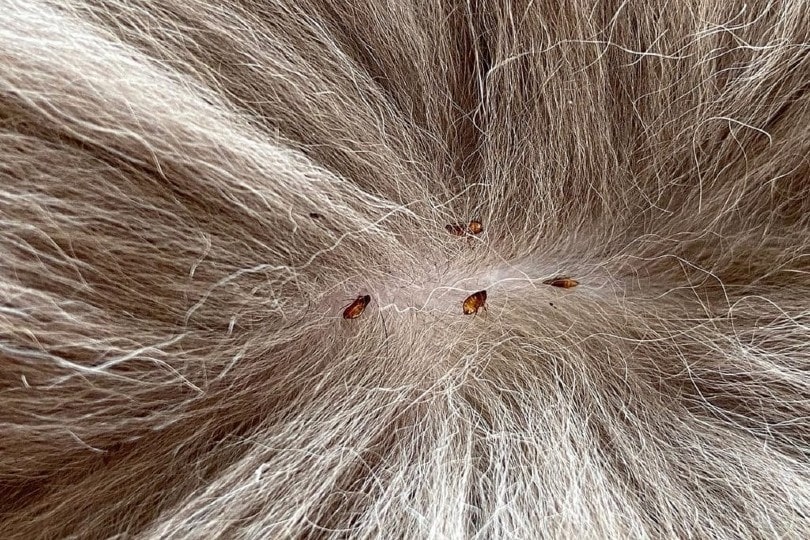
How to Get Rid of Cat Lice
You can purchase insecticidal shampoos, sprays, or powders available from your veterinarian or pet store, which are highly effective in killing cat lice. You may need to repeat the treatment more than once to get rid of all the eggs. Your vet may also advise you to shave your cat, especially if their coat is very matted.
Afterward, you will need to thoroughly wash all of your cat’s bedding, toys, litter, etc. In short, all objects and places where your cat likes to bask in will need to be disinfected.
You will also need to disinfect all grooming tools and, of course, all furniture, rugs, rugs, and floors in your home.
How Long Does It Take to Get Rid of Cat Lice?
The lice you remove from your cat will die instantly, but their eggs can continue to hatch for up to 3 weeks. Therefore, you will need to repeat the treatments about a week after the first treatment. In addition, you will need to thoroughly inspect your cat’s coat for up to 2 weeks after seeing the last louse.
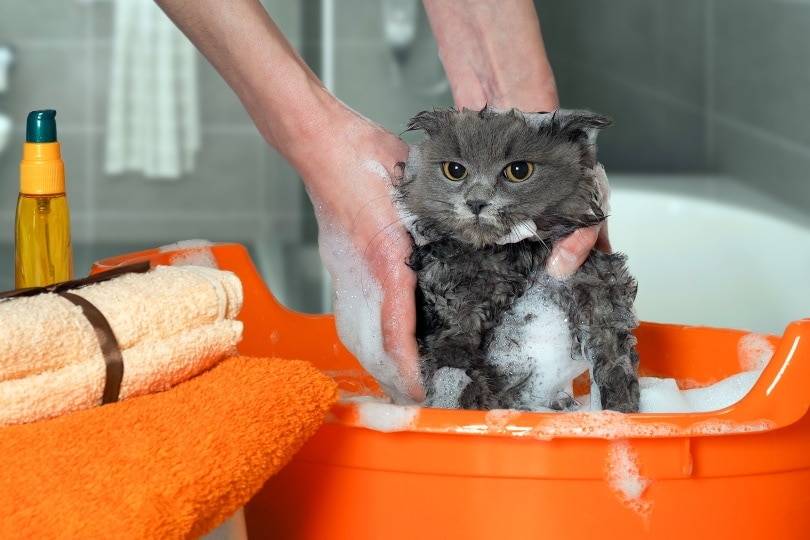
How to Get Rid of Cat Fleas
The first step in attacking a flea infestation is to treat your cat with a topical treatment, tablet, collar, or spray. Seek the advice of your veterinarian to determine which flea treatment will work best for you and your pet.
To quickly get rid of fleas from your home, you’ll need to wash your cat’s bedding in the hottest setting and vacuum where your cat is napping. You will also need to clean the rest of your home, as fleas tend to leave their eggs wherever they want.

How Long Does It Take to Get Rid of Cat Fleas?
Unfortunately, fleas are resilient insects, and completely eliminating them from your home can take a while! This is because flea eggs can remain dormant for almost 6 months. This means that fleas are likely to be present in your home for the next 6 months, hence the importance of repeating cleaning treatments regularly.
Final Thoughts
Cat fleas and lice are wingless insects that feed on the blood or dead skin debris of your precious feline. Although they are tiny creatures, it is possible to tell them apart, especially by their morphology and color, where they bite your pet, and your cat’s particular signs. Although it is not necessarily quick to get rid of these pests, there are effective treatments; however, you will need to repeat these treatments at regular intervals, or these tiny invaders will reappear.
Featured Image Credit: Left: Lice: Felicola Subrostratus (Image Credit: Fourrure, Wikimedia Commons CC BY-SA 2.0 | Fleas: David Jara Bogunya, Shutterstock



